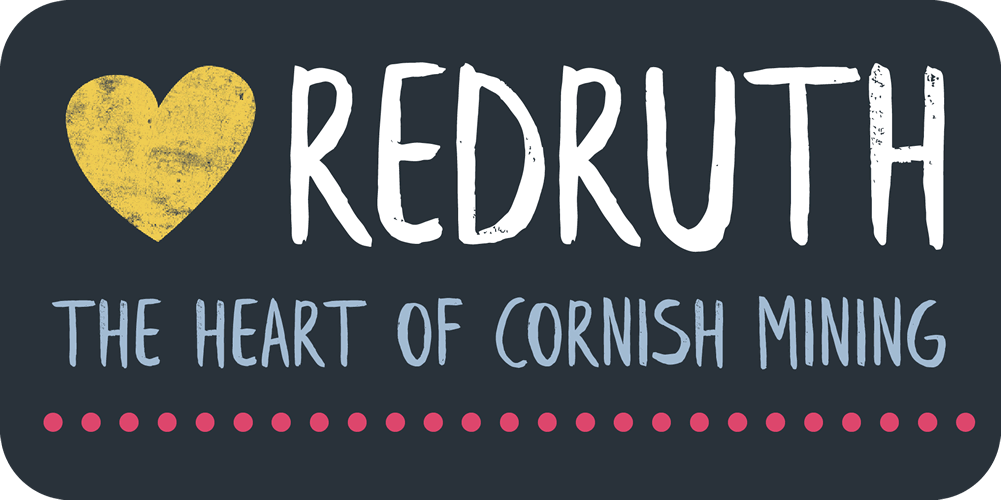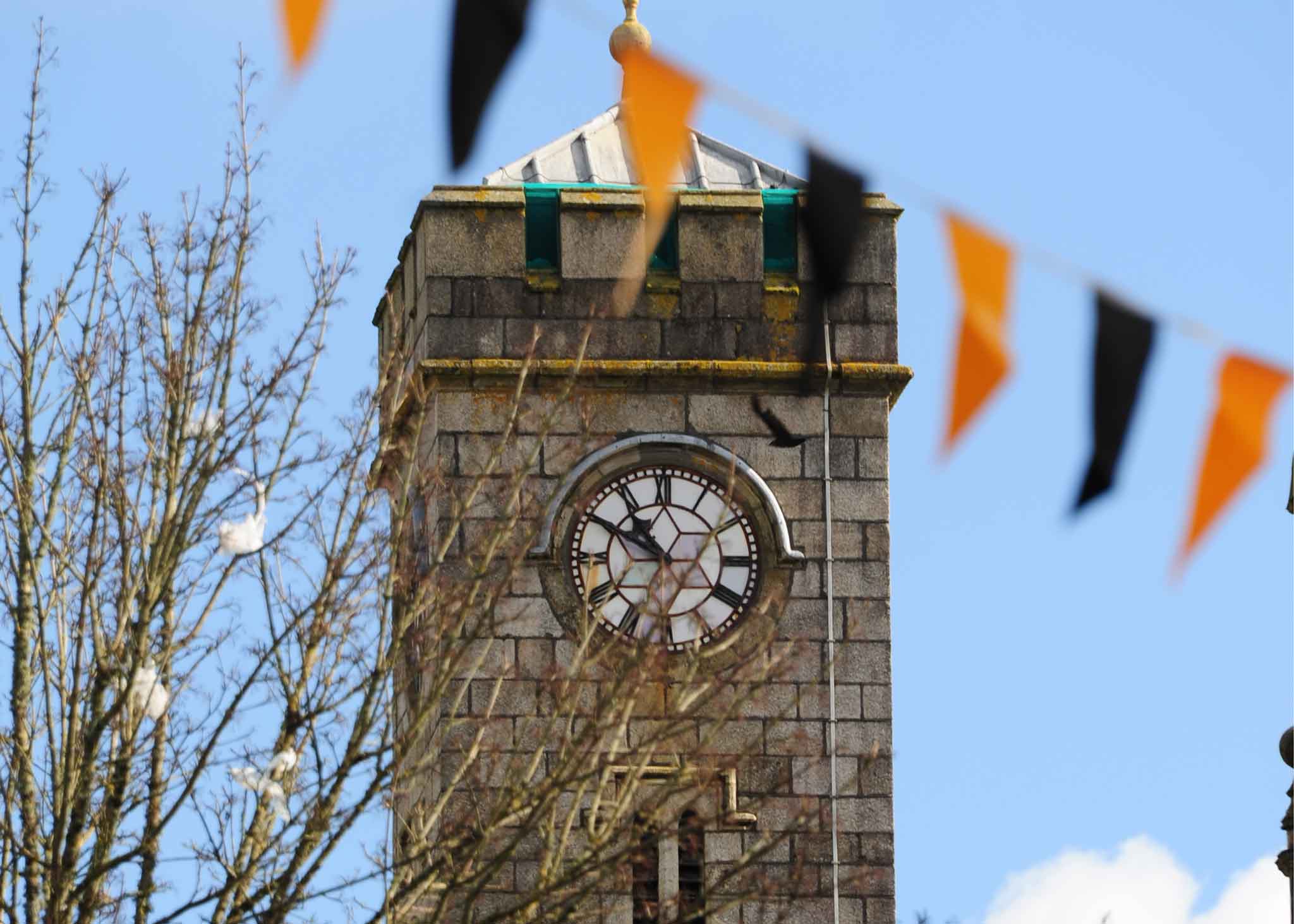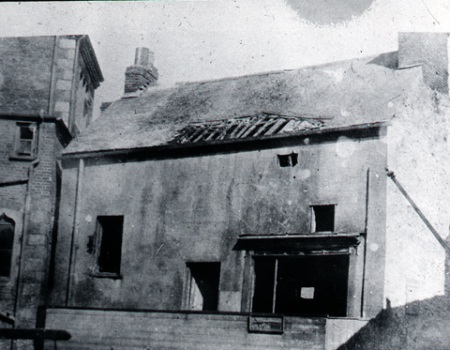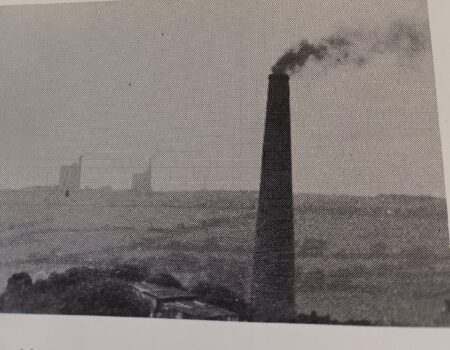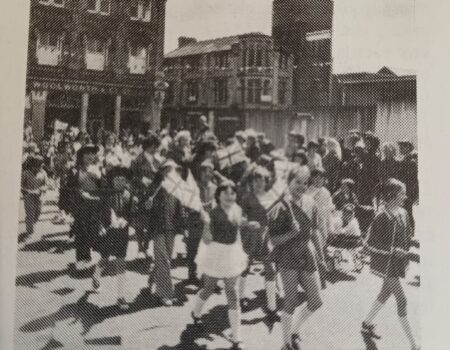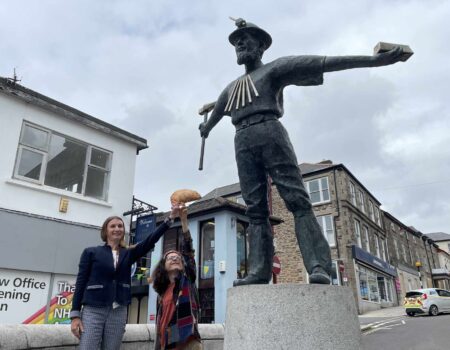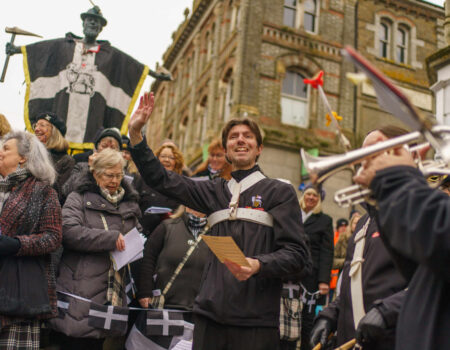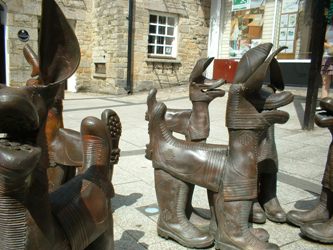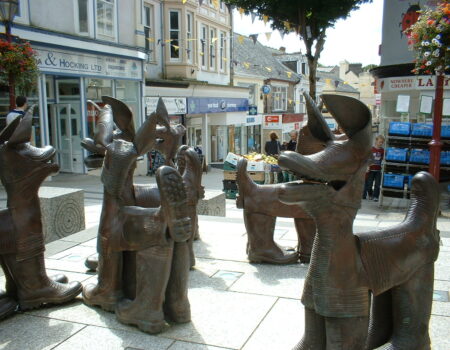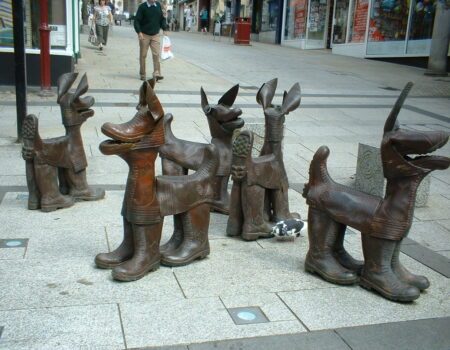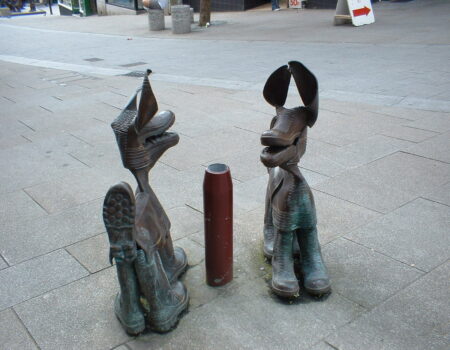The name Redruth – the Cornish for ford is Rhys and red is Ruth – is said to be derived from the fact that the local stream was so discoloured with iron oxide from tinning activities that it ran red. The Red River still runs through the town although it is considerably cleaner now.
The Lamb and Flag is used by Redruth Town Council as the emblem for the town. It was originally a mark used by Cornish tin smelting works to stamp the ingots of tin. The symbol seems to have been used first in the woollen trade during the Middle Ages. By the 19th century, it was suggested that the lamb represented purity, obviously a good selling point for the local tin smelters. We have now adopted the lamb as our mascot in the form of Tolgus, our huge fibreglass Lamb who you might bump into in the Library or out on festival days.
People have been calling Redruth home since the 12th century (or probably much, much earlier) although it wasn’t until the eighteenth century that the town really began to grow as the mining boom took off. The original town settlement was around the church of St Euny – the oldest part of the present church building is the tower, built in 1490 with the body of the church being enlarged in 1756 to accommodate a growing number of parishioners. By then, though, people had moved to live in what we now think of as the centre of town and they walked to church along Church Lane from West End – a route you can still trace today.
In the 1880s and 1890s the town end of Clinton Road gained a number of institutions, notably a School of Mines and Art School in 1882–83, St Andrew’s Church, (replacing the chapel in Chapel Street) in 1883 and, opposite, the Free Library, built in 1895. As the mines boomed, Redruth’s wealth grew and some of the great architecture you see now dates from this era. Passmore Edwards Library and the former Council Chambers building were built in the nineteenth century as well as the imposing granite viaduct carrying the railway east to London or west to Penzance.
The Mining Exchange was built in 1880 as a place for the trading of mineral stock. Redruth was also the main market town for the west of Cornwall and there was a regular livestock market in what is now Fairmeadow car park. On market days in the 19th century, it was a true emporium with stalls selling everything from limpets to pianos. More recently, retail trends were started in Redruth; the first duvets in Cornwall were sold in Knights in the 1970s. Being very much part of the industrial revolution, this part of Cornwall fielded inventors and entrepreneurs such as William Murdoch, the pioneer of gas lighting.
By the end of the 19th century, between social change and Britain importing most of its copper, Redruth began to see a change. Because of the decline in the Cornish mining industry saw the mass emigration of families taking their mining expertise and Cornish culture right across the world. To find employment, many miners emigrated to the newer mining industries in the Americas, Pachuca, Mexico, Australasia and South Africa. Redruth is twinned with ‘sister mining towns’:
- Plumergat et Meriadec, Brittany, France,
- Mineral Point, Wisconsin, United States,
- Real del Monte, Hidalgo, Mexico.
By the turn of the 20th century, Victoria Park had been laid out to commemorate the Golden Jubilee and this part of town had taken on its present appearance – a far cry from the jumble of mining activity that had taken place there in the early 19th century. Redruth was making its transition from a market town dominated by mines and industry to a residential centre. Cornwall’s last fully operational mine, South Crofty at Pool between Redruth and Camborne, closed in March 1998.
In Redruth Town
Tin Miner Statue
A bronze sculpture of a Cornish miner by artist David Annand standing at 6 feet 7 inches was erected in April 2008. The sculpture was commissioned by the Redruth Public Realm Working Party’s Mining Art Group in response to comments received during the consultation process, that the town did not have anything to represent the history of the men who worked down the tin and copper mines in the area. David Annand was selected from over 70 artists who responded to an advert placed by Cornwall Arts Centre Trust, the project managers, for expressions of interest in August 2006.
The Tinner’s Hounds
Cornwall County Council, in conjunction with Kerrier District & Redruth Town Councils, commissioned David Kemp to cast 8 hounds in bronze, created out of the boots of miners. Fittingly, bronze is an alloy of tin and copper, a valuable commodity the owners of the boots were excavating from the bowels of the earth. The Tinner’s Hounds now stand in Tatty Square, on Fore Street in the centre of Redruth, which was once the “capital ” of Cornish Tin Mining, and a wealthy town, built from the miners labours. Local families, supported by the skills and hard work of those who laboured Underground, will recognise this industrial footwear. These working men’s boots have become shopping street sculptures, and a light hearted tribute to the Cornish miners, for their grandchildren to cuddle & climb upon.
So why not come visit Redruth today and see all its history and heritage for yourself.
